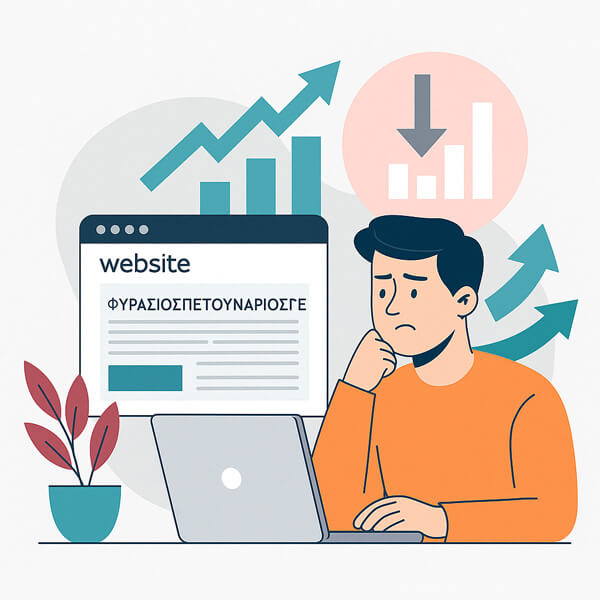Why Your Greek Business Website Might Not Be Converting (And How to Fix It)

It’s one thing to bring visitors to your website. It’s another thing entirely to turn those visitors into paying customers. For many Greek businesses targeting English-speaking audiences, there’s a clear disconnect between attracting traffic and converting it into meaningful results. A website might look beautiful, and even have solid traffic, but if the right signals and user experience aren’t in place, conversions will remain low.
This post highlights some of the most common reasons websites fail to convert — and how Greek business owners can address them to improve performance with English-speaking users.
1. Language That Sounds “Off”
English-language visitors may quickly pick up on copy that feels unnatural — even if it’s grammatically correct. That’s often because content has been translated word-for-word from Greek without adapting tone, idioms, or structure. While the meaning may technically be accurate, the emotional impact and clarity can get lost.
Visitors from the UK, US, and other English-speaking countries expect clean, direct, and relatable content. If something reads oddly or sounds robotic, it can damage trust and reduce engagement.
Fix: Hire a native English content editor to localise key pages, particularly landing pages, homepages, and product or service descriptions. Language should reflect the expectations and tone of your target audience — not just the dictionary.
2. Mobile Usability Issues
In most international markets, over 80% of users access websites from mobile devices. A desktop-first design approach often results in tiny buttons, awkward navigation, and broken layouts on phones. If your mobile experience isn’t seamless, users may bounce — even if the desktop version looks perfect.
Fix: Use responsive design and test on real devices. Make sure CTAs are prominent, forms are easy to use, and key information is accessible without zooming or pinching.
3. Too Much Text, Not Enough Direction
It’s common to want to explain everything — but dense paragraphs with no visual breaks or CTAs lead to overwhelm. A user landing on your site should immediately understand who you are, what you offer, and what they should do next.
Headlines, buttons, and structured layout matter just as much as the words themselves.
“Even small tweaks to mobile layouts or language tone can increase your conversion rate dramatically.”
Fix: Rewrite your content with clarity and flow in mind. Add call-to-action buttons, short paragraphs, and scannable content blocks. Lead your user through a clear journey from landing to conversion.
4. Lack of Trust Signals
When you’re targeting audiences abroad, many users will be unfamiliar with your brand. Trust signals help overcome that. These can include testimonials, third-party reviews, partner logos, SSL security badges, and visible contact information — especially phone numbers with international dialling codes.
Fix: Add visual trust cues throughout your website. Don’t hide your company identity — let people see who’s behind the business.
5. No Cultural Adjustment
Greek design preferences and messaging styles may not resonate with UK or US audiences. Things like colour palettes, humour, call-to-action phrasing, and even layout density can vary by region. Ignoring those subtle cultural differences might cause your site to feel “off” without you realising why.
Fix: Study how successful websites in your target market are structured. Consider working with designers or content editors familiar with UK/US audiences to fine-tune presentation, tone, and user flow.
6. Lack of Clear Offer or Outcome
Visitors may like your site — but if they can’t tell what they’re getting or why it matters, they’ll leave. A vague or general offer (“we provide digital solutions”) won’t convert. People want to know exactly what they get, how much it costs, and what happens next.
Fix: Be clear and specific with your value proposition. State your key benefit in plain language, offer clear pricing or next steps, and remove unnecessary fluff.

Final Thoughts
Your website can work harder for you — and it should. By making small but targeted changes in content clarity, mobile design, trust-building, and localisation, Greek businesses can dramatically improve conversion rates for international traffic.
You don’t need to rebuild your site from scratch. You need to rethink it through the lens of someone who’s never heard of your business — and make sure they feel confident, informed, and ready to take action.

